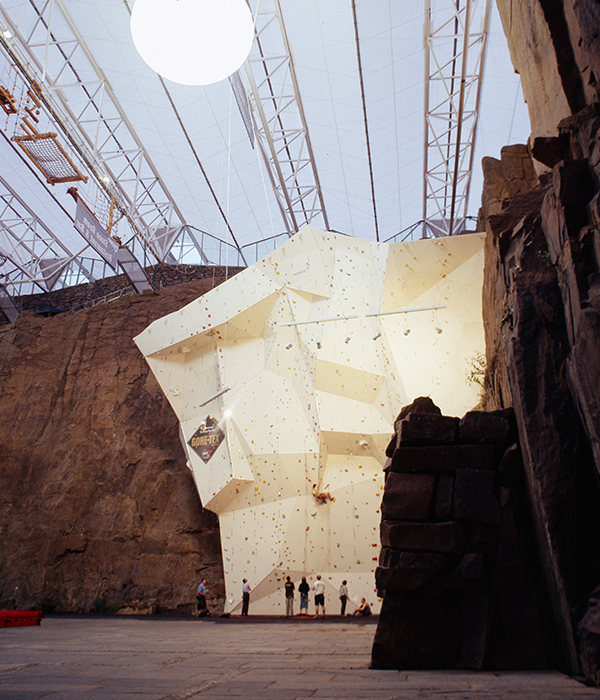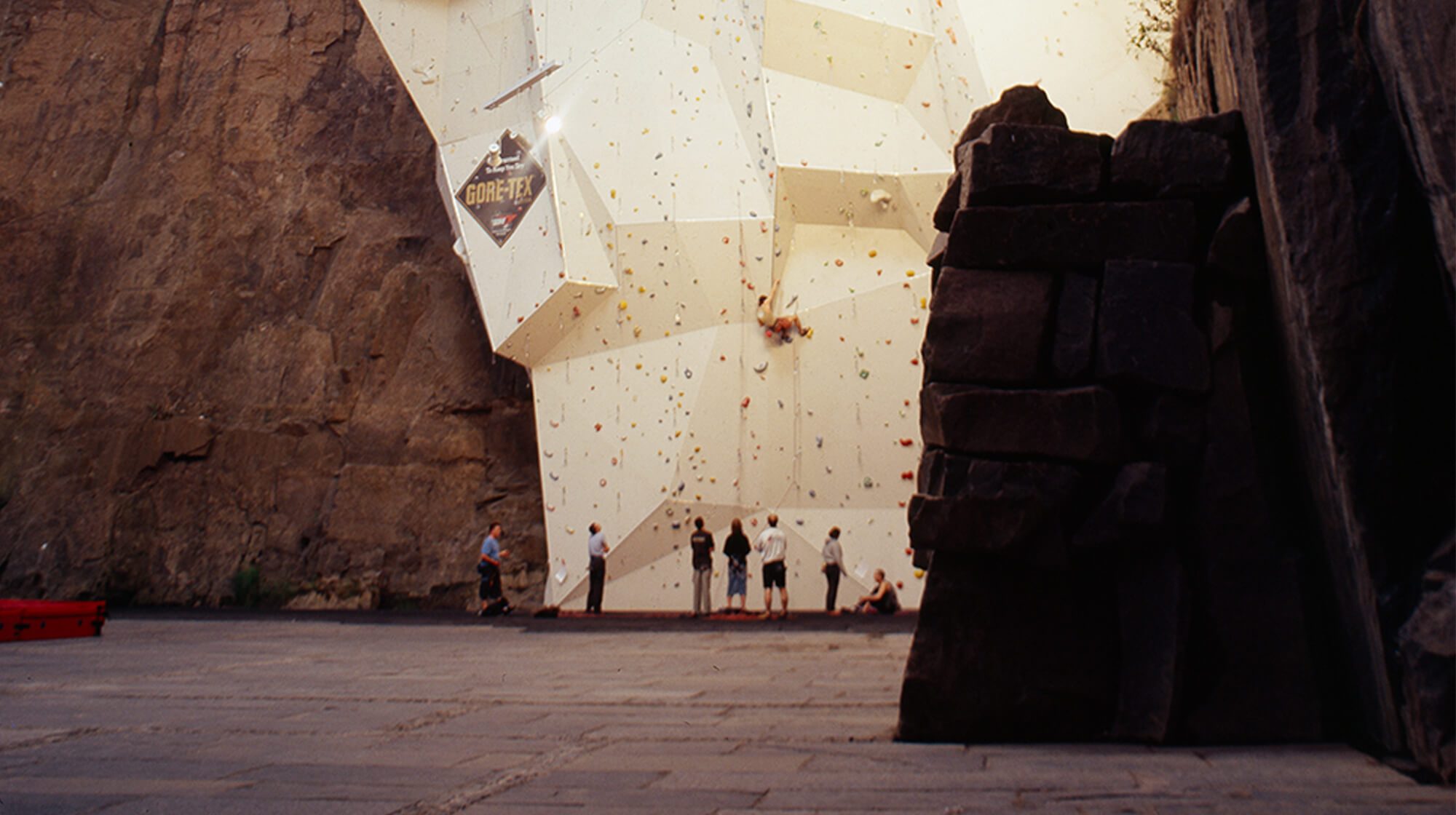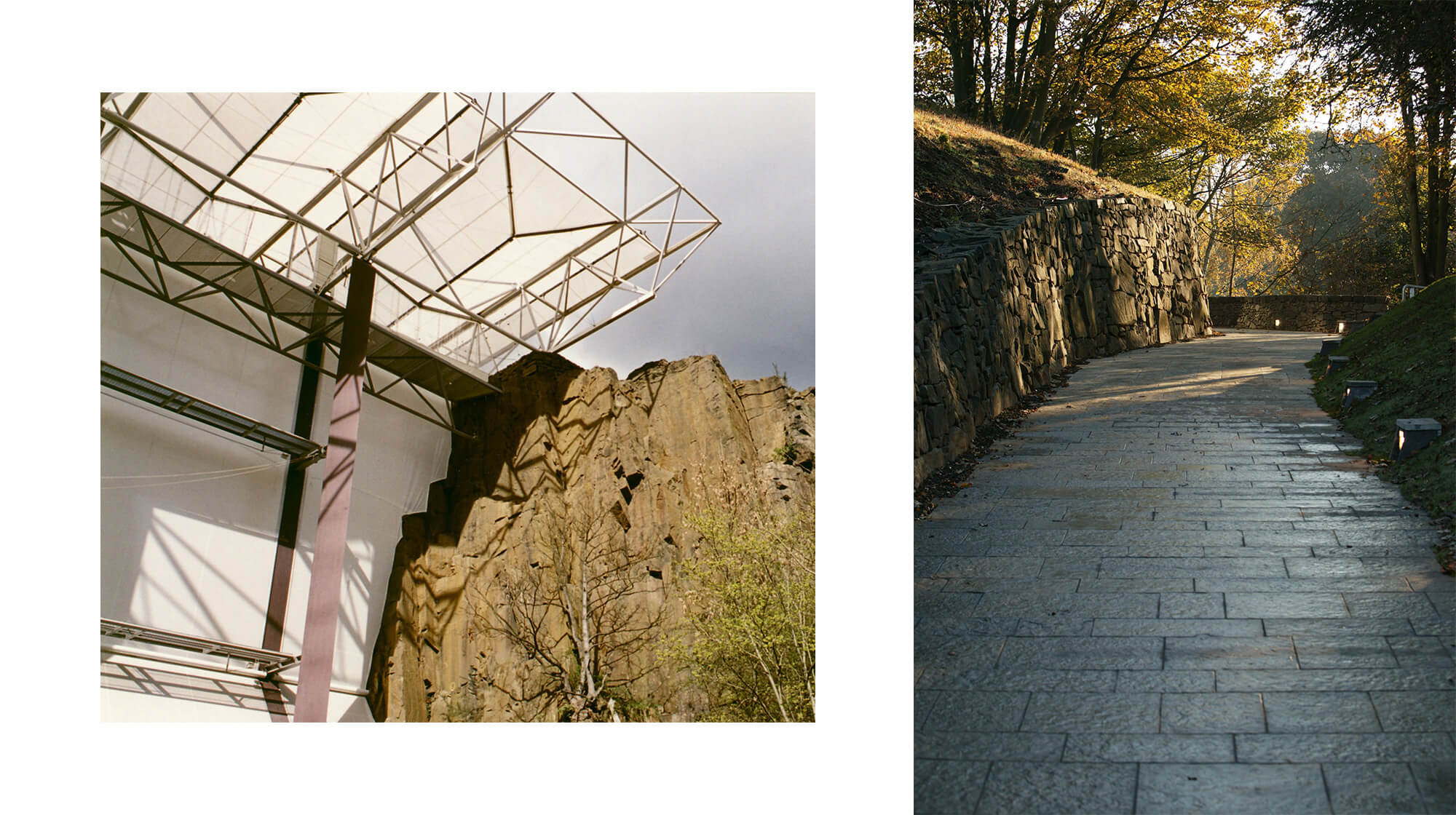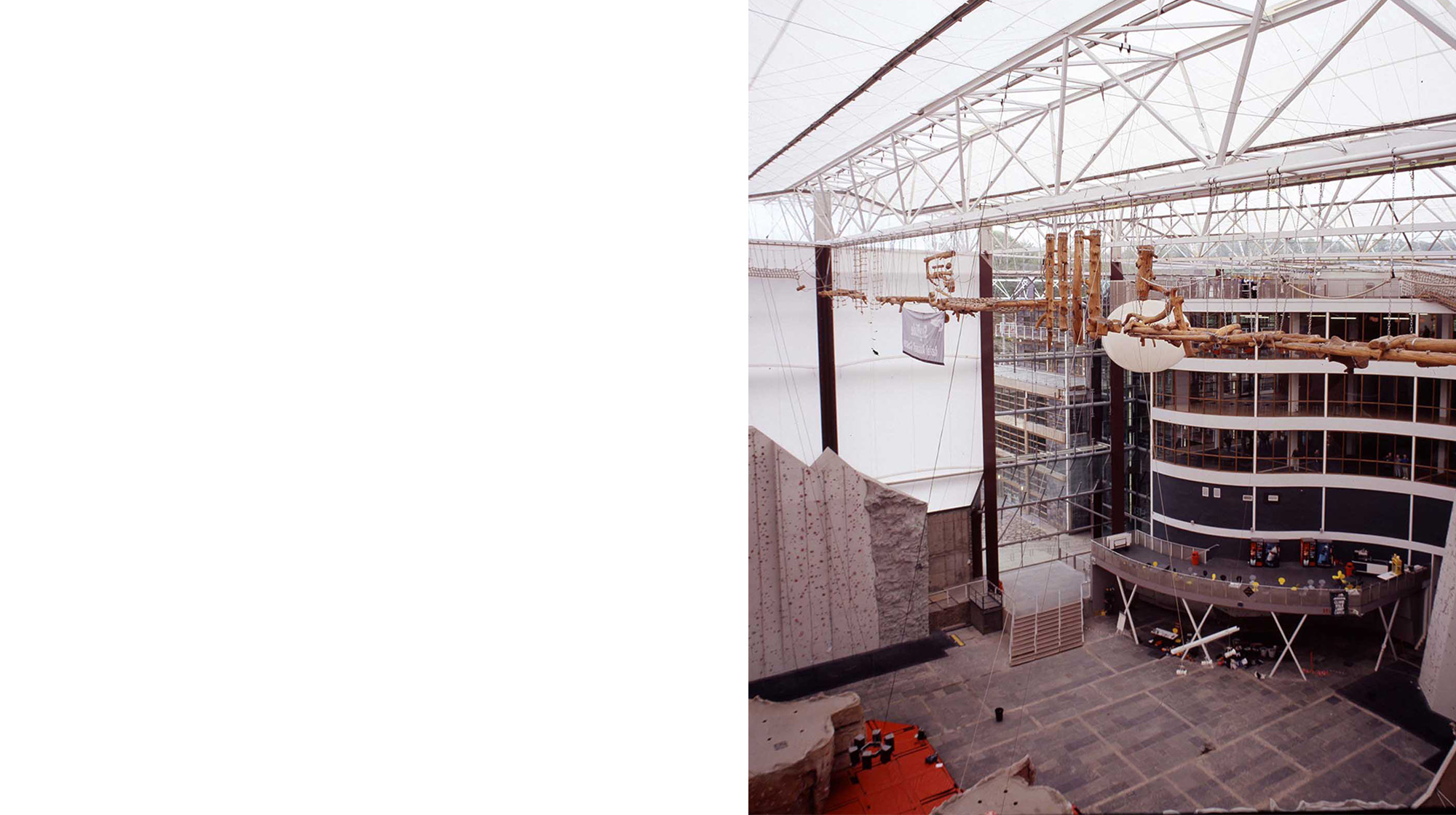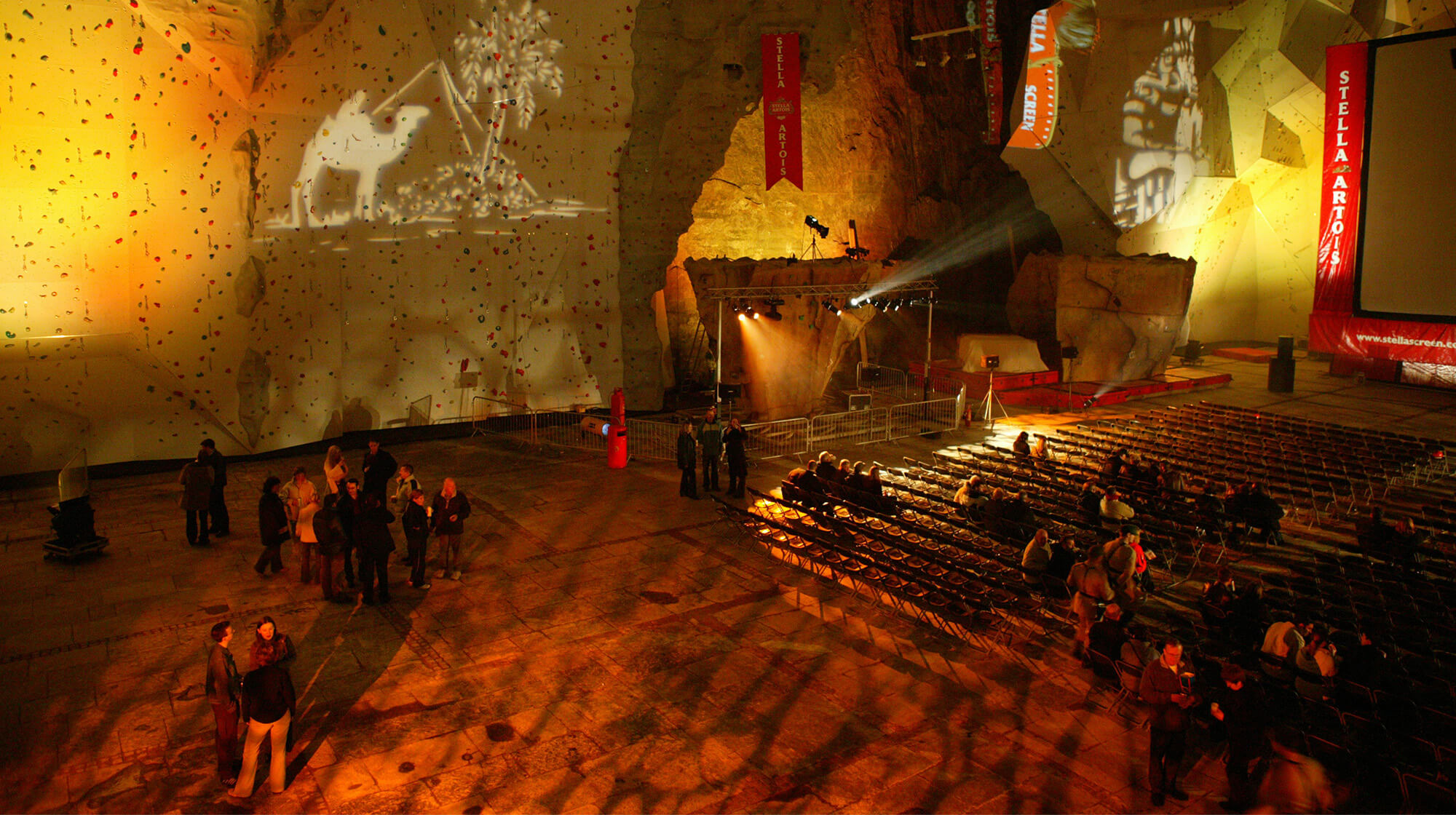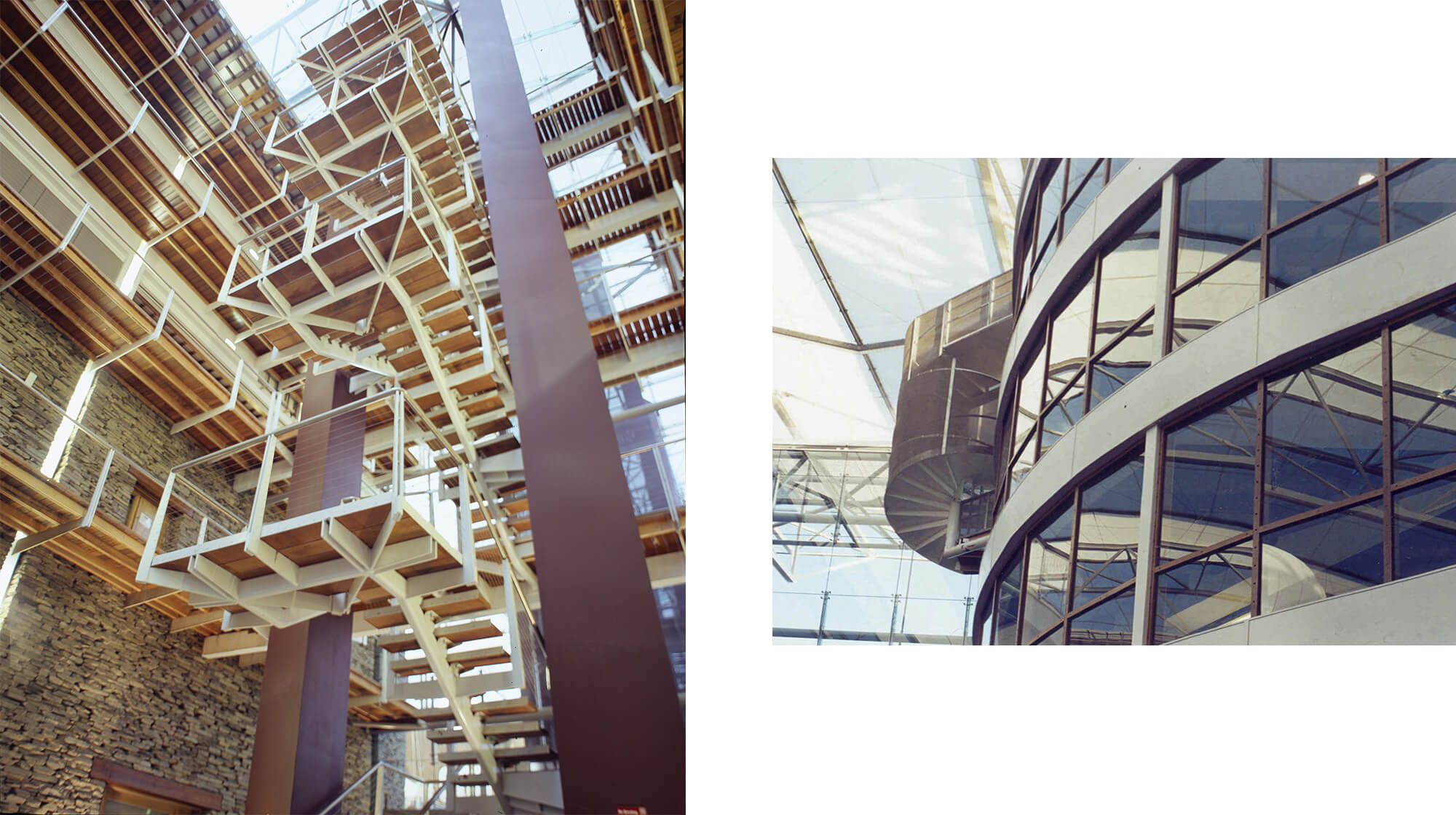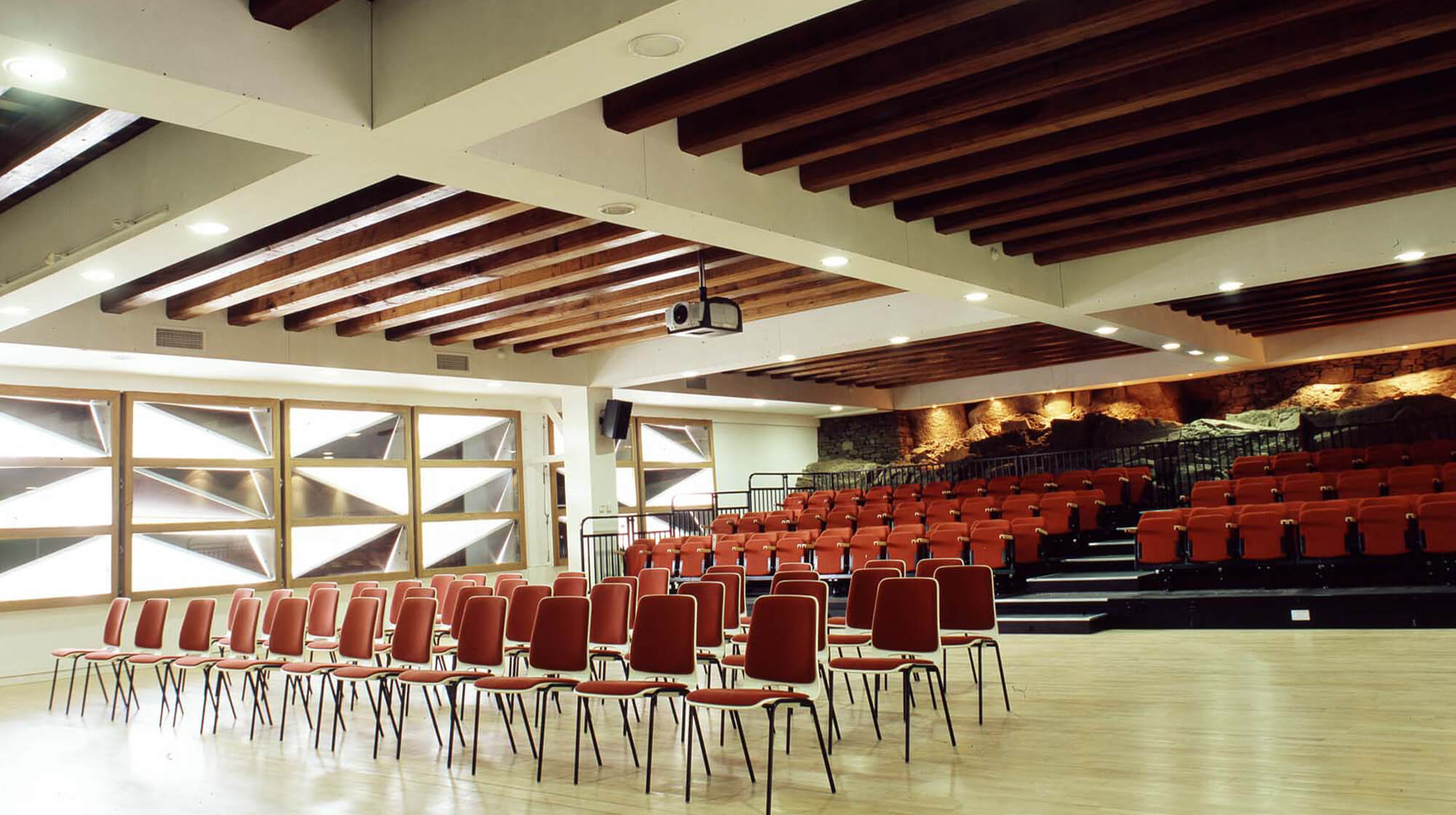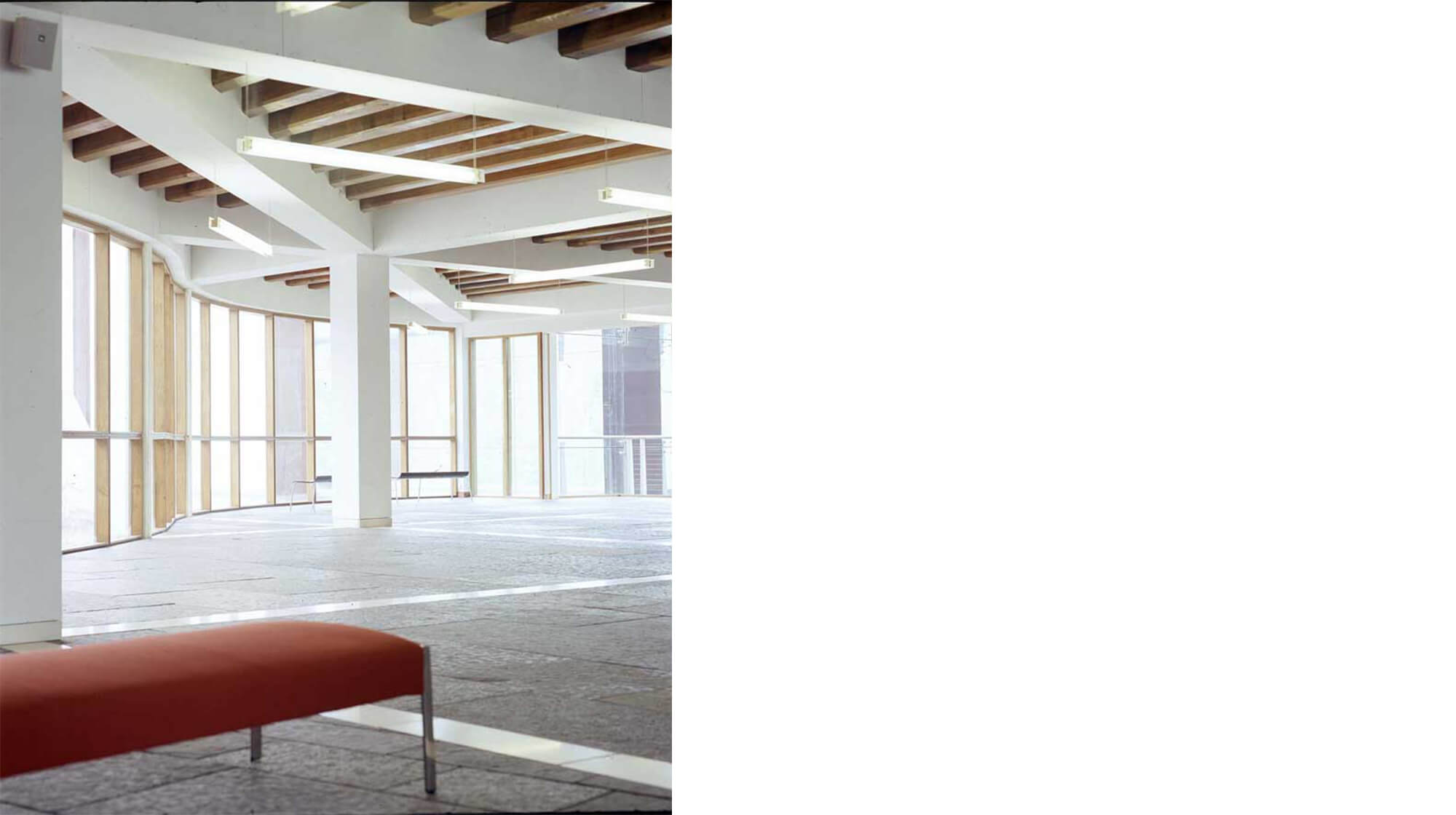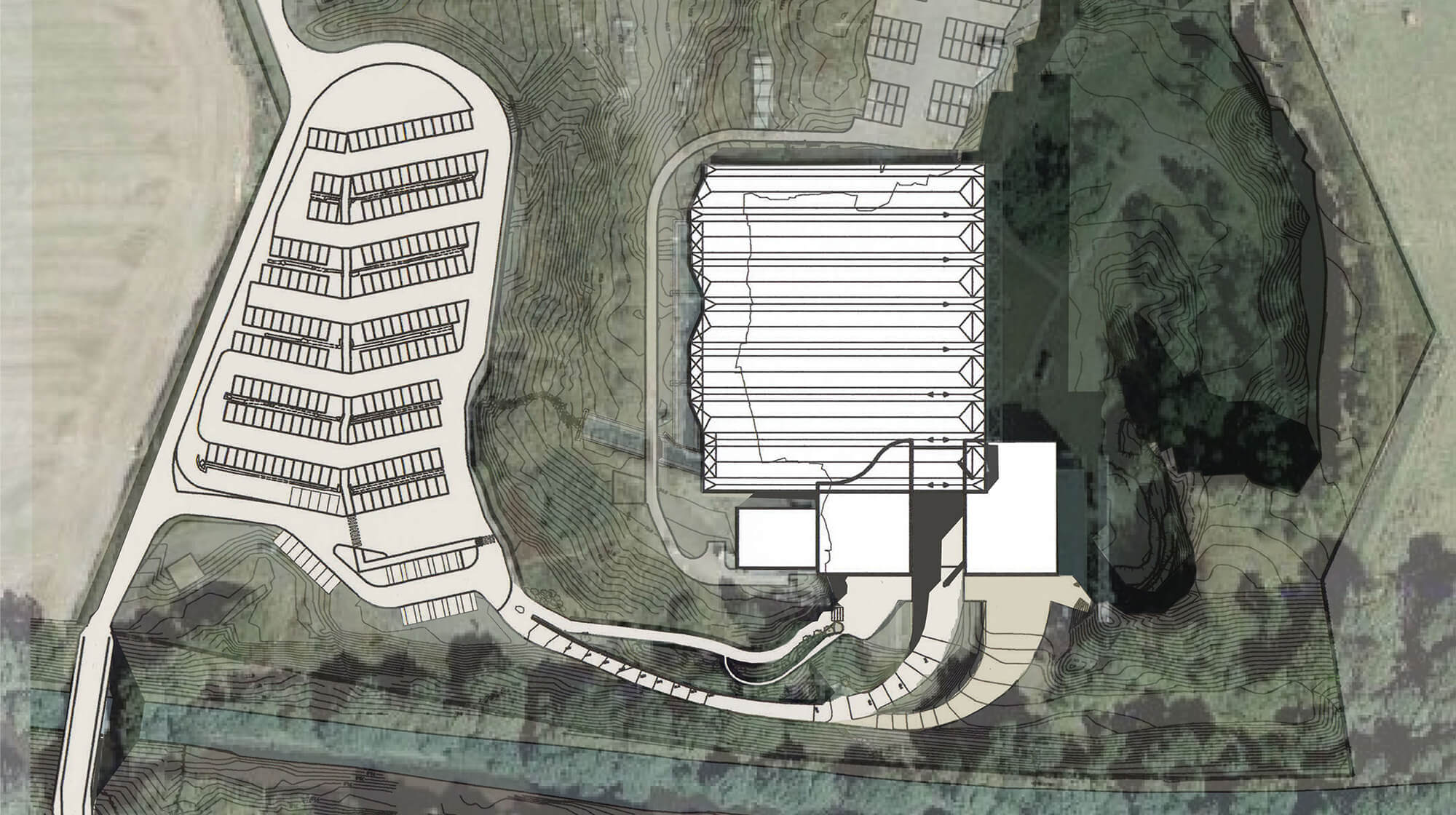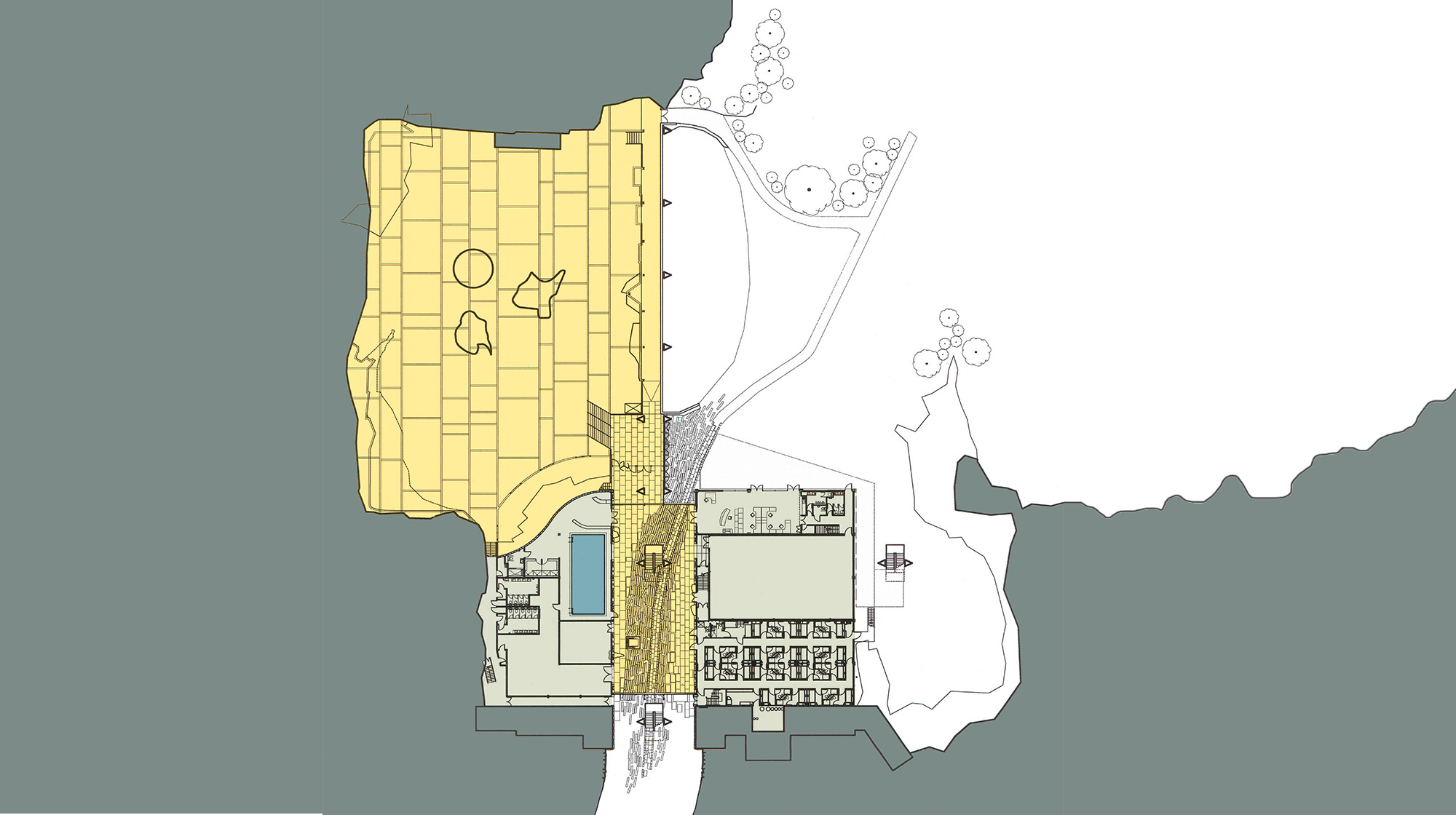In 1995 the Ratho Quarry Co. Ltd. bought the abandoned dolerite quarry that had stood disused for ninety years. The design brief was to construct a building containing all the functions of a national climbing centre including a competition scale climbing hall and supporting facilities.
The scale of the undertaking was enormous; the infilled quarry bowl was cleared of 250,000 tonnes of spoil and rubble to form the climbing arena and a 5 storey accommodation building containing ancillary facilities was built adjacent to this. Access to the site was via a new canal bridge and access road. The climbing arena itself is formed on two sides by the 25m high quarry. The curving glazed facade of the accommodation building forms the 3rd side and the 4th side is enclosed by a series of ETFE sheets pulled taught between monumental triangular steel columns. The roof is formed by an array of lattice trusses spanning from these columns on one side across to the cliff-top on the other. Between and over the trusses is stretched an ETFE roof. This form of roof and wall cladding allows the maximum daylight penetration into the huge internal space.
Neil Taylor was project architect on the EICA, under the direction of his father David Taylor.
- Client
- The Ratho Quarry Company
- Location
- Ratho, Edinburgh
- Status
- Completed 2005
- Contract Value
- £8.5M
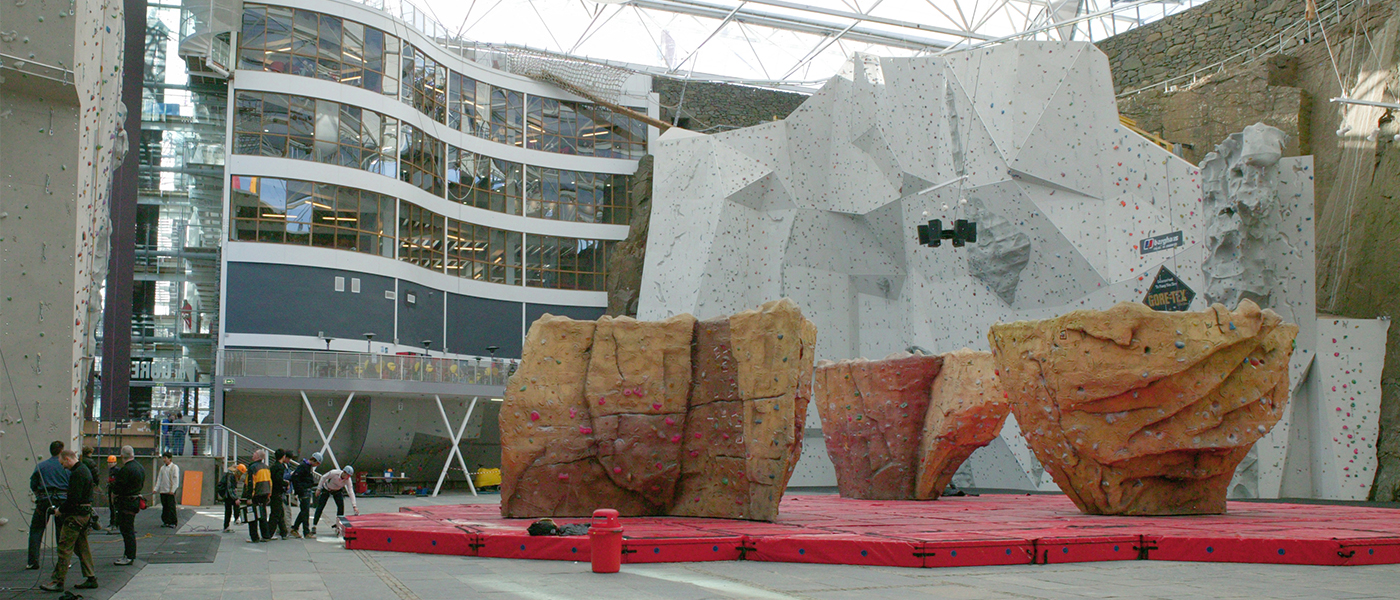
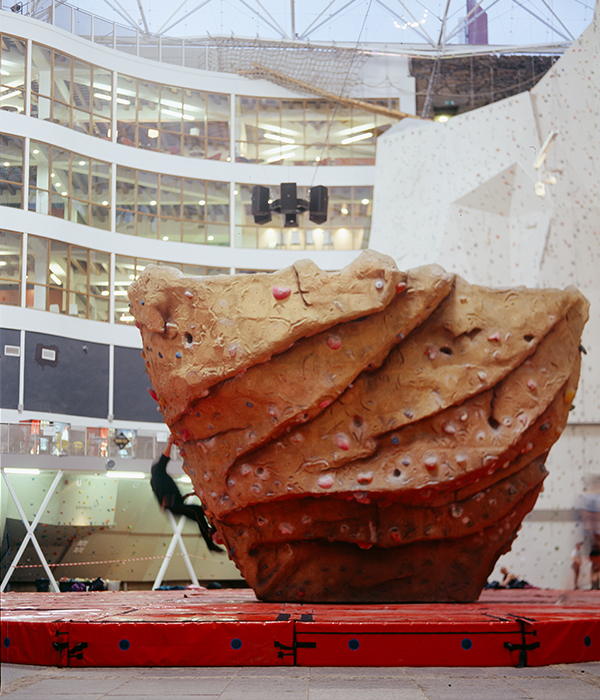
To create the space for the new arena was a huge geo-technical exercise: the infilled quarry bowl was cleared of 250,000 tonnes of spoil and rubble to form the climbing hall with a 5 storey accommodation building containing ancillary facilities was built adjacent to this.
